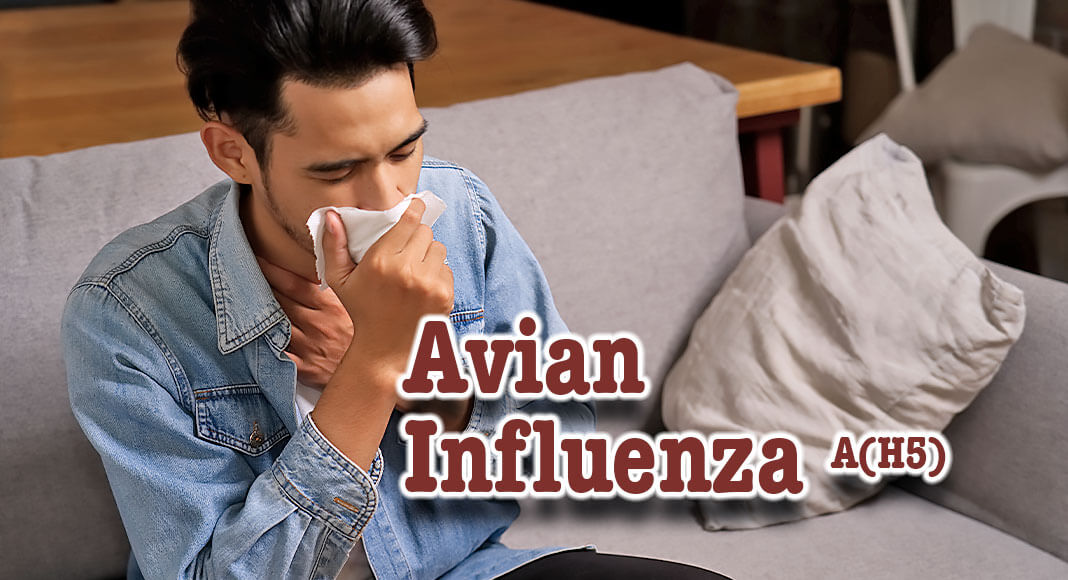
Mega Doctor News
CDC – A person has tested positive for avian influenza A(H5) virus (H5 bird flu) in the U.S., as reported by Colorado and confirmed by CDC. This case occurred in a person who had direct exposure to poultry and was involved in the culling (depopulating) of poultry with presumptive H5N1 bird flu. The patient reported fatigue for a few days as their only symptom and has since recovered. The patient is being isolated and treated with the influenza antiviral drug oseltamivir. While it is possible the detection of H5 bird flu in this specimen is a result of surface contamination of the nasal membrane, that can’t be determined at this point and the positive test result meets the criteria for an H5 case. The appropriate public health response at this time is to assume this is an infection and take actions to contain and treat.
This case does not change the human risk assessment for the general public, which CDC considers to be low. However, people who have job-related or recreational exposures to infected birds are at higher risk of infection should take appropriate precautions outlined in CDC guidance.
CDC has been monitoring for illness among people exposed to H5N1 virus-infected birds since these outbreaks were detected in U.S. wild birds and poultry in late 2021 and into 2022. To date, H5N1 viruses have been found in U.S. commercial and backyard birds in 29 States and in wild birds in 34 states. CDC has tracked the health of more than 2,500 people with exposures to H5N1 virus-infected birds and this is the only case that has been found to date. Other people involved in the culling operation in Colorado have tested negative for H5 virus infection, but they are being retested out of an abundance of caution.
This is the second human case associated with this specific group of H5 viruses that are currently predominant, and the first case in the United States. The first case internationally occurred in December 2021 in the United Kingdom in a person who did not have any symptoms and who raised birds that became infected with H5N1 virus. More than 880 human infections with earlier H5N1 viruses have been reported since 2003 worldwide, however, the predominant H5N1 viruses now circulating among birds globally are different from earlier H5N1 viruses.
Infected birds shed H5N1 viruses in their saliva, mucous and feces. H5N1 virus infections among people are rare; however, human infections can happen when enough virus gets into a person’s eyes, nose, or mouth, or is inhaled. People with close or lengthy unprotected contact (not wearing respiratory or eye protection) with infected birds or places that sick birds or their mucous, saliva, or feces have touched, may be at greater risk of H5N1 virus infection. Illnesses in people from bird flu virus infections have ranged from mild (e.g., eye infection, upper respiratory symptoms) to severe illness (e.g., pneumonia) that can result in death. The only previous human case associated with this group of H5N1 viruses produced in no symptoms. Spread of earlier H5N1 viruses from one infected person to a close contact in the past have happened very rarely and have not led to sustained person-to-person spread.
Local, state and federal health partners are working together to prevent spread of this H5N1 virus among birds and people. The U.S. Department of Interior and U.S. Department of Agriculture (USDA) are the lead federal departments for avian influenza outbreak investigation and control in wild birds, and USDA Animal and Plant Health Inspection Service is the lead agency for such activities in domestic birds such as poultry. The U.S. Department of Health and Human Services and CDC are the lead federal partners for public health for this situation.
This one H5-positive human case does not change the human health risk assessment. CDC will continue to watch this situation closely for signs that the risk to human health has changed. Signals that could raise the public health risk might include multiple reports of H5N1 virus infections in people from exposure to birds, or identification of spread from one infected person to a close contact. CDC also is monitoring H5N1 viruses for genetic changes that have been associated with adaptation to mammals, which could indicate the virus is adapting to spread more readily from birds to people. CDC is taking routine preparedness and prevention measures, which includes an existing candidate vaccine virus that could be used to make vaccine for people if one were needed.
CDC has guidance for clinicians, public health practitioners and people with potential bird exposures. As a reminder, people should avoid contact with poultry that appear ill or are dead and avoid contact with surfaces that appear to be contaminated with feces from wild or domestic birds, if possible. If you must handle wild birds or sick or dead poultry, minimize direct contact by wearing gloves and wash your hands with soap and water after touching birds. If available, wear respiratory protection such as a medical facemask and eye protection such as goggles. It is safe to eat properly handled and cooked poultry and poultry products in the U.S. The proper handling and cooking of poultry and eggs to an internal temperature of 165˚F kills bacteria and viruses, including H5N1 viruses. Additional information on protective actions around birds, including what to do if you find a dead bird, is available. CDC also has guidance for specific groups of people with exposure to poultry, including poultry workers and people responding to poultry outbreaks. CDC will continue to provide further updates to the situation and update guidance as needed.










